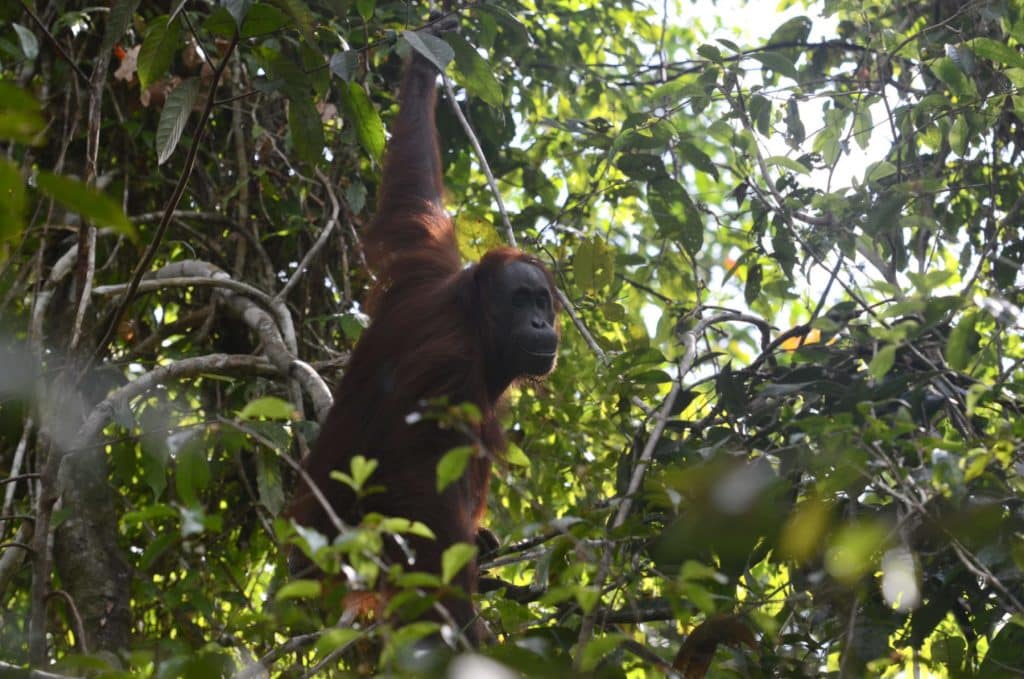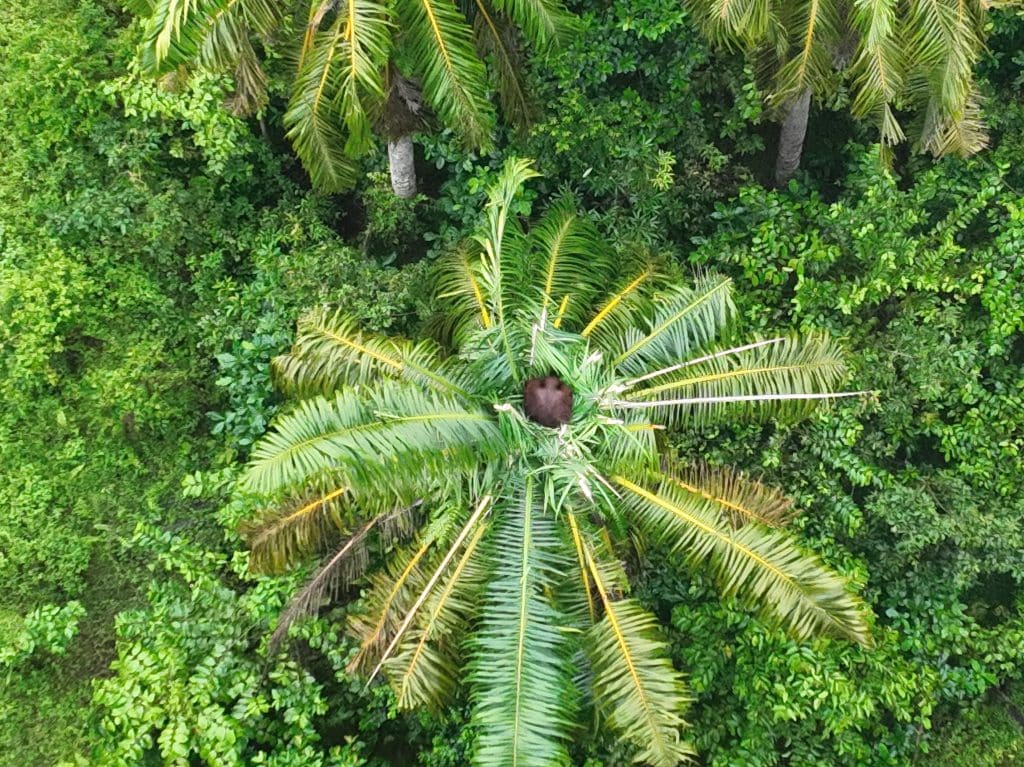The bed of dry leaves and ferns were carefully arranged on a framework of broken branches, clear hallmarks of an orangutan nest. It resembled any other nest found in the canopies of Malaysian Borneo’s Lower Kinabatangan Wildlife Sanctuary, with one crucial difference—this nest was on the forest floor. Ground-nesting behavior has never been recorded among wild orangutans before, and this unprecedented discovery has led Hutan to take measures to protect these remarkable great apes and their novel nests from any disturbances.

Mosaic landscapes—wild forest mixed with agricultural land—are common in Malaysian Borneo. Hutan has identified 34 ground nests within a 25-acre forest fragment surrounded by a palm oil plantation. While this area lacks enough mature trees to support orangutans full time, it has high conservation value because orangutans use it as a pitstop while traveling across the plantation to larger forests. After years of Hutan monitoring these commuting orangutans—convincing palm oil companies to preserve small islands of forest so their fragmented populations can maintain connectivity—orangutans are adapting to live in these mosaic landscapes.
Ground-nesting behavior is the latest example of their ingenuity and resilience. The nests likely provide them with temporary shelter as they forage and even stay overnight in the forest patch. They would only build ground nests near agricultural zones if they recognized it as a safe place; safety derived from Hutan’s ongoing conservation efforts. To ensure it stays that way, Hutan is working with palm oil manufacturers to keep workers away from this important forest patch. As orangutans increasingly identify mosaic landscapes as suitable habitat, Hutan will continue promoting coexistence between orangutans and people.



